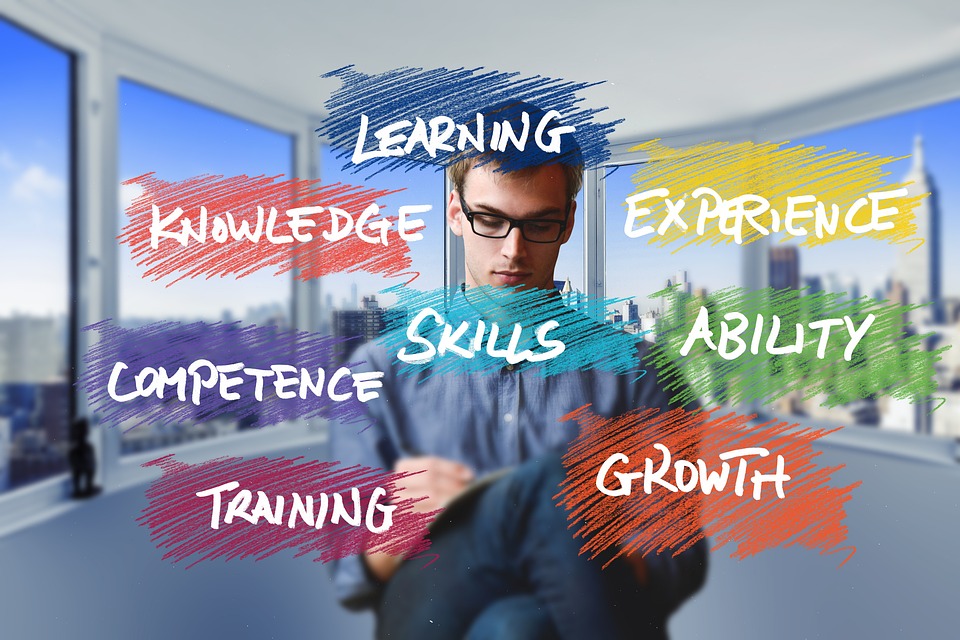Community and Social Impact
The ROI of Social Impact: Measuring the Return on Investment for Companies

The Rise of Workplace Social Impact Programs
In today’s fast-paced, globalized business landscape, companies are constantly seeking innovative ways to stay ahead of the competition. One area that has gained significant attention in recent years is workplace social impact programs. As companies strive to make a positive impact on the world, they are recognizing the benefits of incorporating social responsibility into their business strategies.
What is Social Impact?
Social impact refers to the positive change or effect that an organization or individual has on the world. In the context of business, social impact can take many forms, such as promoting diversity and inclusion, reducing carbon emissions, or supporting local communities. A company’s social impact can have a significant impact on its reputation, employee morale, and even its bottom line.
Measuring the Return on Investment (ROI) of Social Impact
Measuring the ROI of social impact is crucial for companies looking to make a positive difference. It allows them to assess the effectiveness of their initiatives and identify areas for improvement. By tracking key performance indicators (KPIs), organizations can measure the financial, social, and environmental impact of their social impact programs and make data-driven decisions to optimize their strategies.
The Benefits of Measuring ROI of Social Impact
There are several benefits to measuring the ROI of social impact, including:
-
Improved Transparency and Accountability
By tracking KPIs, companies can demonstrate their commitment to transparency and accountability, building trust with stakeholders and investors.
-
Optimized Resource Allocation
Measuring ROI helps organizations identify the most effective initiatives and allocate resources accordingly, ensuring maximum impact with limited resources.
-
Increased Employee Engagement
When employees feel their work is making a positive impact, they are more likely to be engaged, motivated, and productive, leading to improved job satisfaction and reduced turnover.
Real-Life Examples of Measuring ROI of Social Impact
Several companies have successfully implemented social impact programs and measured their ROI. For example:
The Walt Disney Company’s Environmental Sustainability Goals
The Walt Disney Company has set ambitious environmental sustainability goals, including reducing greenhouse gas emissions and waste. By tracking KPIs such as energy consumption and waste reduction, Disney has been able to measure the success of its initiatives and make data-driven decisions to optimize its strategies.
Patagonia’s Environmental and Social Impact
Patagonia, a leader in outdoor apparel, has made a commitment to environmental and social responsibility. By tracking metrics such as carbon footprint reduction and employee volunteer hours, Patagonia has been able to measure the impact of its initiatives and identify areas for improvement.
Conclusion
Measuring the ROI of social impact is a critical step in ensuring that companies are making a positive difference. By tracking KPIs and making data-driven decisions, organizations can optimize their social impact programs and achieve their goals. Whether it’s reducing carbon emissions, promoting diversity and inclusion, or supporting local communities, the ROI of social impact is an essential metric for businesses looking to make a lasting impression on the world.
FAQs
What is the ROI of social impact? The ROI of social impact refers to the financial, social, and environmental return on investment of a company’s social impact programs.
Why is measuring the ROI of social impact important? Measuring the ROI of social impact is important for companies to assess the effectiveness of their initiatives, identify areas for improvement, and make data-driven decisions to optimize their strategies.
What are some examples of companies that have successfully measured the ROI of their social impact? The Walt Disney Company and Patagonia are two examples of companies that have successfully implemented social impact programs and measured their ROI.
Community and Social Impact
How Community Impact Is Evolving in 2025

In 2025, community impact is no longer just about writing a check or hosting a one-time event. Today’s professionals—and the communities they serve—expect deeper, more meaningful engagement.
Across industries, we’re seeing a shift: people want to work for organizations that do more than talk about values—they want to see those values in action. And businesses are listening.
The New Definition of Impact
Impact used to be measured in dollars donated or volunteer hours tracked. Now, it’s about transformation—how organizations use their resources, influence, and people power to spark long-term change.
Whether it’s supporting minority-owned businesses, mentoring first-gen college students, or partnering with local nonprofits on workforce development, companies are moving from charity to collaboration.
Businesses as Community Partners
One standout trend in 2025? Strategic community partnerships. More companies are co-creating initiatives with local leaders, not just sponsoring them. They’re asking:
-
What does this community actually need?
-
How can we offer skills, time, and opportunities—not just funding?
This approach is helping close gaps in education, healthcare, and career access, especially in underserved areas.
The Rise of Employee-Led Impact
Employees want to be part of the solution, and smart organizations are letting them lead the way. Volunteer councils, internal DEIA task forces, and community idea labs are empowering teams to shape programs that reflect their own lived experiences and passions.
This bottom-up approach creates buy-in, boosts morale, and leads to solutions that are more innovative and rooted in reality.
Why It Matters
When done right, social impact doesn’t just change communities—it transforms companies. It builds trust, strengthens culture, and connects business goals with human needs.
In a time when people are craving meaning and connection, purpose-driven impact is more than good PR—it’s a business imperative.
Final Thought
Community impact in 2025 is about showing up consistently, listening deeply, and creating value that lasts long after the event ends. If your organization wants to be relevant—and responsible—it’s time to stop asking, “What can we give?” and start asking, “What can we build—together?”
Community and Social Impact
Case study: A social enterprise that addresses systemic issues and promotes social justice.

Social entrepreneurship case studies have become increasingly important in addressing systemic issues and promoting social justice. Through innovative solutions and dedication, social enterprises can drive meaningful change and improve the lives of individuals and communities. In this article, we will explore a case study of a social enterprise that has made a significant impact in addressing systemic issues and promoting social justice.
Background and Context
The social enterprise we will be discussing is the TOMS company, founded by Blake Mycoskie in 2006. TOMS is a shoe company that has pioneered the “one-for-one” model, where for every pair of shoes sold, a pair is donated to a child in need. This model has not only provided shoes to millions of children worldwide but has also raised awareness about the importance of access to education and healthcare.
The Problem: Lack of Access to Education and Healthcare
In many developing countries, children lack access to basic necessities like shoes, which can lead to a range of health problems and hinder their ability to attend school. This is a systemic issue that perpetuates poverty and inequality. TOMS recognized this problem and created a solution that not only provides shoes but also supports education and healthcare initiatives.
The Solution: One-for-One Model
The one-for-one model is simple yet effective. For every pair of shoes sold, TOMS donates a pair to a child in need. This model has been successful in providing shoes to over 95 million children worldwide. Additionally, TOMS has expanded its model to include other products, such as eyewear and coffee, with similar one-for-one donations.
Impact and Outcomes
The impact of TOMS’ one-for-one model has been significant. Not only has it provided shoes to millions of children, but it has also raised awareness about the importance of access to education and healthcare. TOMS has also partnered with other organizations to support education and healthcare initiatives, further amplifying its impact.
Case Study: TOMS’ Impact in Rwanda
In Rwanda, TOMS has partnered with local organizations to provide shoes to children and support education initiatives. One such partnership is with the Partners In Health organization, which provides healthcare services to rural communities. Through this partnership, TOMS has provided shoes to thousands of children and supported healthcare initiatives, leading to improved health outcomes and increased access to education.
Challenges and Lessons Learned
While TOMS’ one-for-one model has been successful, the company has faced challenges and learned valuable lessons. One of the main challenges has been ensuring that the shoes donated are of high quality and meet the needs of the children receiving them. TOMS has learned the importance of partnering with local organizations and involving the community in the decision-making process.
Lessons Learned: Community Involvement and Partnership
TOMS has learned that community involvement and partnership are crucial to the success of its one-for-one model. By partnering with local organizations and involving the community in the decision-making process, TOMS has been able to ensure that its donations are meeting the needs of the children and communities it serves.
Conclusion
In conclusion, social entrepreneurship case studies like TOMS demonstrate the potential for innovative solutions to address systemic issues and promote social justice. Through its one-for-one model, TOMS has provided shoes to millions of children worldwide and raised awareness about the importance of access to education and healthcare. While challenges have arisen, TOMS has learned valuable lessons about the importance of community involvement and partnership. As we move forward, it is essential to continue to support and learn from social enterprises like TOMS, which are creating lasting impact and driving meaningful change.
Frequently Asked Questions
Q: What is the one-for-one model, and how does it work?
A: The one-for-one model is a business model where for every product sold, a similar product is donated to someone in need. In the case of TOMS, for every pair of shoes sold, a pair is donated to a child in need.
Q: How many children has TOMS provided shoes to through its one-for-one model?
A: TOMS has provided shoes to over 95 million children worldwide through its one-for-one model.
Q: What other products does TOMS offer, and how do they fit into the one-for-one model?
A: TOMS offers a range of products, including eyewear and coffee, with similar one-for-one donations. For example, for every pair of eyewear sold, TOMS provides eye care to someone in need.
Q: How can I get involved with TOMS and support its mission?
A: You can get involved with TOMS by purchasing its products, volunteering with the company, or partnering with TOMS as a business or organization.
Q: What are some other social entrepreneurship case studies that I can learn from?
A: There are many social entrepreneurship case studies that you can learn from, including companies like Warby Parker and Patagonia, which have pioneered innovative models for social and environmental impact.
Community and Social Impact
Case study: A social enterprise that provides training and resources to small-scale farmers.

Social entrepreneurship case studies have become increasingly popular in recent years, as they provide valuable insights into the world of social innovation and entrepreneurship. One such case study is that of a social enterprise that provides training and resources to small-scale farmers, helping them to improve their livelihoods and contribute to sustainable agriculture.
Background and Context
The social enterprise, which we will refer to as “Green Harvest,” was founded in 2010 with the mission of empowering small-scale farmers to improve their agricultural practices and increase their income. Green Harvest operates in rural areas where small-scale farming is the primary source of livelihood for many families. The organization’s founders recognized the potential of small-scale farming to contribute to sustainable agriculture and improve the livelihoods of rural communities.
Problem Statement
Small-scale farmers in these areas face numerous challenges, including limited access to training, resources, and markets. They often lack the knowledge and skills to improve their agricultural practices, resulting in low yields and limited income. Additionally, they are vulnerable to climate change, soil degradation, and other environmental factors that can further exacerbate their poverty.
Solution Overview
Green Harvest addresses these challenges by providing training and resources to small-scale farmers. The organization offers a range of services, including agricultural training, access to improved seeds and fertilizers, and support with marketing and sales. Green Harvest also works with local communities to promote sustainable agriculture practices and support the development of rural economies.
Programs and Services
Green Harvest offers a range of programs and services to support small-scale farmers. These include:
Agricultural Training
Green Harvest provides training to small-scale farmers on improved agricultural practices, such as crop rotation, soil conservation, and integrated pest management. The training is tailored to the specific needs of the farmers and is delivered through a combination of classroom instruction and hands-on practice.
Access to Inputs
Green Harvest provides small-scale farmers with access to improved seeds, fertilizers, and other inputs. The organization has established relationships with local suppliers to ensure that farmers have access to high-quality inputs at affordable prices.
Market Access
Green Harvest helps small-scale farmers to access markets and sell their produce. The organization has established relationships with local buyers and has developed a marketing strategy to promote the produce of its farmers.
Impact and Results
Green Harvest has had a significant impact on the lives of small-scale farmers. The organization has worked with over 10,000 farmers, providing them with training, resources, and support. As a result, farmers have seen significant increases in their yields and income. On average, farmers who have worked with Green Harvest have seen their income increase by 50%.
Success Stories
One success story is that of Maria, a small-scale farmer who has been working with Green Harvest for three years. With the support of Green Harvest, Maria has been able to improve her agricultural practices and increase her yields. She has also been able to access markets and sell her produce, resulting in a significant increase in her income. Maria is now able to send her children to school and has improved her family’s livelihood.
Challenges and Lessons Learned
Despite its success, Green Harvest has faced several challenges. One of the main challenges has been scaling up its operations to reach more farmers. The organization has also faced challenges in terms of funding and resources.
Scaling Up
To scale up its operations, Green Harvest has developed a range of strategies, including establishing partnerships with local organizations and governments. The organization has also developed a range of tools and resources to support its work, including training manuals and marketing materials.
Funding and Resources
To address the challenge of funding and resources, Green Harvest has established relationships with a range of donors and partners. The organization has also developed a range of income-generating activities, including selling its own brand of produce.
Conclusion
In conclusion, Green Harvest is a social enterprise that has made a significant impact on the lives of small-scale farmers. The organization’s approach to providing training and resources has helped farmers to improve their agricultural practices and increase their income. Green Harvest’s success demonstrates the potential of social entrepreneurship to address some of the world’s most pressing challenges, including poverty and hunger.
Frequently Asked Questions
What is Green Harvest?
Green Harvest is a social enterprise that provides training and resources to small-scale farmers.
What services does Green Harvest offer?
Green Harvest offers a range of services, including agricultural training, access to improved seeds and fertilizers, and support with marketing and sales.
How has Green Harvest impacted the lives of small-scale farmers?
Green Harvest has had a significant impact on the lives of small-scale farmers, providing them with the skills and resources they need to improve their agricultural practices and increase their income.
What are some of the challenges that Green Harvest has faced?
Green Harvest has faced several challenges, including scaling up its operations and accessing funding and resources.
How can I get involved with Green Harvest?
There are several ways to get involved with Green Harvest, including volunteering, donating, and partnering with the organization.
-

 Career Advice6 months ago
Career Advice6 months agoInterview with Dr. Kristy K. Taylor, WORxK Global News Magazine Founder
-

 Diversity and Inclusion (DEIA)6 months ago
Diversity and Inclusion (DEIA)6 months agoSarah Herrlinger Talks AirPods Pro Hearing Aid
-

 Career Advice6 months ago
Career Advice6 months agoNetWork Your Way to Success: Top Tips for Maximizing Your Professional Network
-

 Changemaker Interviews5 months ago
Changemaker Interviews5 months agoUnlocking Human Potential: Kim Groshek’s Journey to Transforming Leadership and Stress Resilience
-

 Diversity and Inclusion (DEIA)6 months ago
Diversity and Inclusion (DEIA)6 months agoThe Power of Belonging: Why Feeling Accepted Matters in the Workplace
-

 Global Trends and Politics6 months ago
Global Trends and Politics6 months agoHealth-care stocks fall after Warren PBM bill, Brian Thompson shooting
-

 Global Trends and Politics6 months ago
Global Trends and Politics6 months agoUnionization Goes Mainstream: How the Changing Workforce is Driving Demand for Collective Bargaining
-

 Training and Development6 months ago
Training and Development6 months agoLevel Up: How Upskilling Can Help You Stay Ahead of the Curve in a Rapidly Changing Industry









